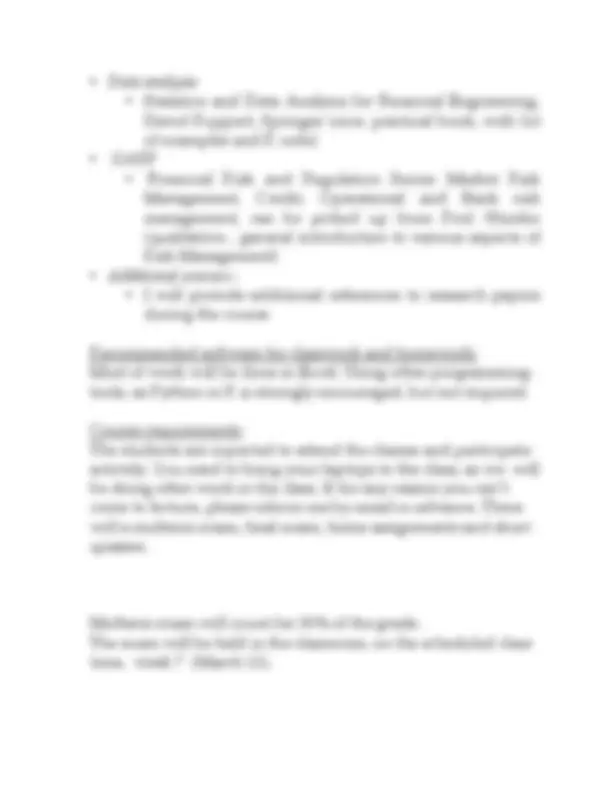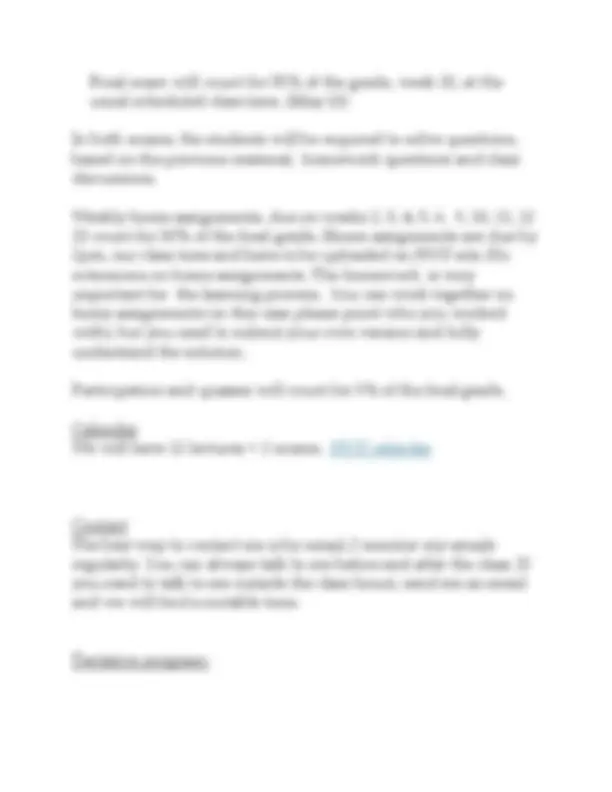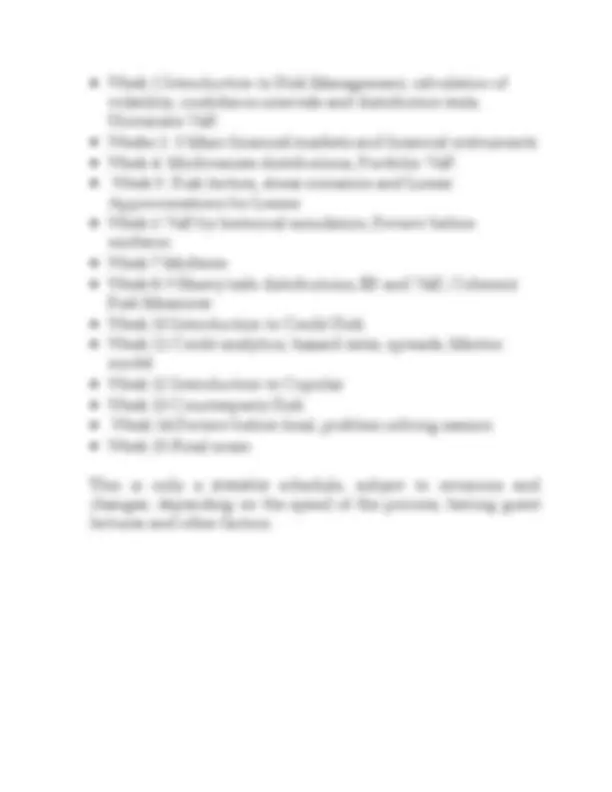





Study with the several resources on Docsity

Earn points by helping other students or get them with a premium plan


Prepare for your exams
Study with the several resources on Docsity

Earn points to download
Earn points by helping other students or get them with a premium plan
Community
Ask the community for help and clear up your study doubts
Discover the best universities in your country according to Docsity users
Free resources
Download our free guides on studying techniques, anxiety management strategies, and thesis advice from Docsity tutors
The course FRE6123 Financial Risk Management offered by the Department of Finance and Risk Engineering at New York University Tandon School of Engineering in Spring 2020. The course covers the importance of financial risk management in today's world, introduces necessary theory, and discusses typical examples and cases. The course objective is to provide students with a good understanding of risk management and its applications in real life. a tentative schedule and suggested readings.
Typology: Lecture notes
1 / 5

This page cannot be seen from the preview
Don't miss anything!




New York University Tandon School of Engineering Department of Finance and Risk Engineering Course outline FRE6123 Financial Risk Management Spring 2020 Professor Roza Galeeva Wednesday, 2pm – 4.30 pm, location Rogers Hall, 214 Course Description: The recent financial crisis and its impact on the broader economy underscore the importance of financial risk management in today's world. Risk management is a unique domain, proving the importance of power of mathematics in real world and constantly posing new challenges in view of increasingly complex products and strategies. The course teaches risk management from scratch, with business practice in mind. In each class we will introduce the necessary theory and discuss typical examples and cases. We will start by surveying pre-VaR risk management, introduce main financial markets and instruments. We will cover Value at Risk and computational techniques in detail as this is still the predominant risk measure used in practice. We consider calculation of Greeks for main financial instruments, historical simulation for VaR portfolio. Coherent risk measures like Expected Shortfall are also being increasingly considered and used. We will review basic multivariate models, such multivariate normal distributions and introduce their generalizations, as normal mixture models. Using these tools, we will analyze portfolio VaR.
Other topics include introduction to copulas, credit risk and counterparty risk. Course Objective:
Final exam will count for 3 5 % of the grade, week 15, at the usual scheduled class time. (May 13 ) In both exams, the students will be required to solve questions, based on the previous material, homework questions and class discussions. Weekly home assignments, due on weeks 2, 3, 4, 5, 6, 9, 10, 11, 12 13 count for 30 % of the final grade. Home assignments are due by 2pm, our class time and have to be uploaded on NYU site. No extensions on home assignments. The homework is very important for the learning process. You can work together on home assignments (in this case please point who you worked with), but you need to submit your own version and fully understand the solution. Participation and quizzes will count for 5 % of the final grade. Calendar We will have 12 lectures + 2 exams. NYU calendar Contact The best way to contact me is by email, I monitor my emails regularly. You can always talk to me before and after the class. If you need to talk to me outside the class hours, send me an email and we will find a suitable time. Tentative program: